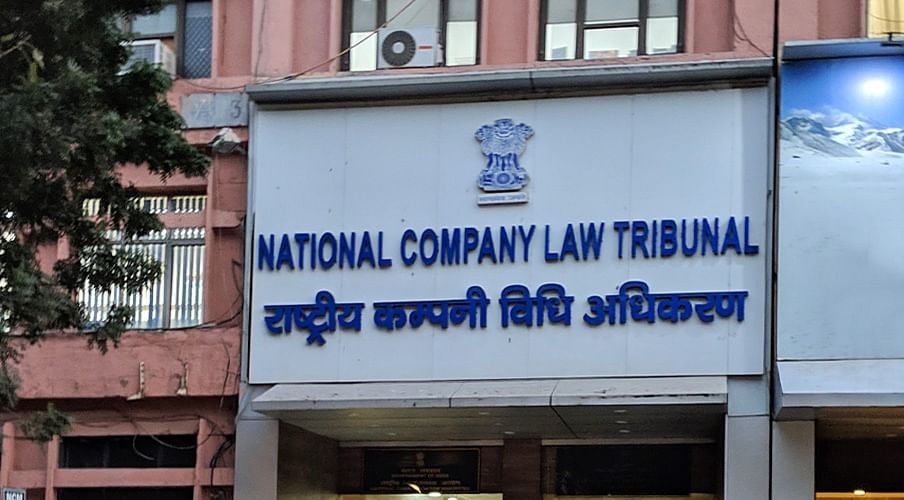CONSTITUTIONAL VALIDITY OF THE ESTABLISHMENT OF NCLT AND ITS ROLE IN DISPUTE RESOLUTION

Abstract
With the coming of varied disputes arising out of specialization of economic relations and an enormous load of cases that are piled up, it becomes hectic for the court to adjudicate upon effectively, and there arises the need for the establishment of tribunals. The Central Govt. established the National Company Law Tribunal (hereinafter NCLT) on 1st June 2016. This paper shall highlight the constitutional challenge to the establishment of NCLT and how did the Apex Court responded to such a challenge twice and showed its liberal approach of holding NCLT constitutional. Furthermore, the author shall discuss the two case studies in detail to understand the different contentions and shall discuss its role in adjudicating company-related disputes today.
Introduction
The term ‘tribunal’ in its literal interpretation would mean “seat of justice”.[1]The NCLT was established with the aim of offering advantages of speediness, cheapness, informality, and expertise which does not require the need to follow the tedious procedural codes and is thus speedy & cost-effective.
Background: The SC’s decision in SV Sampath Kumar v. U.O.I, laid the groundwork for the creation of specialized tribunals thereby reducing the burden on HC.[2] The J.Eradi Committee came up with the recommendation of establishing NCLT for the first time in 1999 in response to which the Companies (2nd Amendment) Act, 2002 was amended to include the provisions for the establishment of NCLT and NCLAT (Appellate) to replace Company Law Board(CLB), but the same was never notified since it was challenged in the Madras HC by the Madras Bar Association.
Literature Review
While researching the topic at hand, the author has come across several literature articles discussing this issue drawing similar lines of arguments thereby comprehensively and critically analyzing the constitutionality of the establishment of NGT and its effectiveness in disposing of company related disputes. Nevertheless, there is little backing to the jurisprudential aspect to understand the core perspective of establishing such tribunals however, the literary works have a gap in providing concrete suggestions that can be implemented in order to cover the loopholes that many papers have talked about in NCLT being less transparent. This paper shall try to meet the gap by providing certain recommendations that can be taken up by NCLT in order to meet the loopholes.
Twin Case Study Of Challenges Before The SC
U.O.I v. R. Gandhi Madras Bar Association[3]: Mr. R Gandhi, the president of Madras Bar Association filed a writ petition before Madras HC challenging the legislative competency of the Parliament to establish NCLT.
- Contentions of the Petitioner: The Parliament doesn’t have the legislative competence to vest judicial functions of the HC to a tribunal which is a quasi-judicial body & by the creation of the NCLT & the transfer of the entire company jurisdiction of the HC to the Tribunal, is a violation of the separation of powers and the Judiciary's independence, both of which are part of the Constitution's basic structure. Further, insolvency, revival, and restructuring of a company is not a matter to be handled by tribunals as mentioned in Art.323B(2). The numerous sections in Chapters IB and IC (namely- qualifications,[4]term[5], etc) of the Companies Act, 1956 (are deficient and unconstitutional, as they violate fundamental principles of the Rule of Law, Separation of Powers, and Judiciary Independence.
- Contentions of the Respondent: The Centre wants to lower the number of cases pending and the time it takes to wind up a case from 20 to 25 years to around two years and prevent several lawsuits in various forums because all can be heard and resolved by NCLT. Further stating that the ability to establish NCLT and NCLAT came from Article 245 read in conjunction with numerous items in List I of the VII 9Schedule and not from Article 323B.
The Madras HC concluded that the establishment of NCLT is constitutional. It did, however, bring out a number of flaws in the provisions of Part IB and IC of The Companies Act, 1956 (amendment 2002) that is deemed to be in violation of the essential constitutional structure. The Union agreed to fix some of the flaws that the HC had pointed out but said that some parts of Parts IB and IC were not invalid, and so appealed in the Supreme Court. The SC held that Parts IB and IC as presently structured, are unconstitutional but these can be made operational by making suitable amendments & holding the constitutionality of the establishment of NCLT.
A critical view of the author: The author believes that the contention put forth by the Bar association could be that if qualifications & other essential powers in constituting members of the tribunal if left at the hands of the Parliament would lead to a lack of transparency and legitimacy of the quasi-judicial body thereby affecting doctrine of separation of powers & basic stricture. Nevertheless, upholding NCLT & NCLAT constitutional, the SC has gone ahead and used the golden rule of interpretation for Art. 323B thereby holding the legislative competency of the Union.
Madras Bar Association v. U.O.I[6]: However, the Madras Bar Association filed a writ petition before the SC challenging once again the constitutional validity of NCLT & NCLAT. The court looked further into the flaws in the provisions that needed to be fixed after the 2010 decision. The court held Sec.10FD invalid which made joint secretaries with certain experience eligible for technical members of NCLT. The Court then declared Sections 409(3)(a) and (c), as well as Section 411(3) of the Companies Act 2013, to be invalid because they tinkered with the ‘clear and categorical dicta in 2010 judgment,' and stated that for the appointment of technical Members to the NCLT, the directions contained in sub-para (ii), (iii), (iv), (v) of para 120 of the 2010 judgement will have to be scrupulously followed. [7]However, the SC reiterated its 2010 judgement of holding NCLT & NCLAT to be constitutionally valid with recommending certain suggestions paving way for the establishment of NCLT.
Role In Dispute Resolution
Since its inception in 2016, NCLT is known to have adjudicated effectively cases pertaining to insolvency and bankruptcy. The effective role of NCLT in cases such as, Innoventive Industries Ltd v. ICICI Bank [8]trying to comprehend the functioning & operation of the IBC Code, & Swiss Ribbons v. Union of India pertaining to the constitutionality of the IBC is noteworthy. Also noteworthy is the time frame being set up under sec.422 which deals with expeditious disposal of every petition or appeal filed within three months[9] & if not disposed of, the tribunal shall write in reasoning for non-disposal of such matter and shall take up that matter not exceeding 90 days[10]. Aggrieved by any order or appeal, the person can approach SC within 60 days.[11]
Conclusion and Suggestion
The establishment of the NCLT and NCLAT as specialized tribunals for the administration of all matters arising under the Companies Act will undoubtedly reduce, if not eliminate, the fatal delay in company law proceedings, avoid multiple litigations before various forums, optimize the appeal process, and reduce the burden on the High Courts. However, NCLT & NCLAT must adopt a fair & transparent procedure.
Suggestions: Openness should be there to know from the time a petition is filed with the National Company Law Tribunal to initiate a bankruptcy case until it is resolved, so that recovery rates can be calculated which shall help people determine the liquidation value if the firm is liquidated. This data is beneficial to everyone in the economy. When a corporate debtor is admitted to the NCLT's corporate insolvency resolution procedure, Resolution Professional (appointed by NCLT) is obliged to take over the debtor's full management and operations and administer the whole CIRP. Another issue is that the creditors' committee has sole power over the RPs, with no rules in place. The necessity of the hour is to strengthen the NCLT benches' institutional competence and increase openness in the selection of RPs.
[1] MP Jain & SN Jain, Principles of Administrative Law, 7thed, 2017, pp. 754.
[2] SV Sampath Kumar v. U.O.I, 1987 SCR (3) 233.
[3] U.O.I v. R. Gandhi, Madras Bar Association, (2010) 11 SCC 1.
[4] 10FD, Part IB, Companies Act, 1956.
[5] 10FE, Part IB, Companies Act, 1956.
[6] Madras Bar Association v. U.O.I, (2015) 8 SCC 583.
[7] LiveLaw News Network, Supreme Court upholds constitutionality of the National Company Law Tribunal and the National Company Law Appellate Tribunal,(https://www.livelaw.in/supreme-court-upholds-constitutionality-of-the-national-company-law-tribunal-and-the-national-company-law-appellate-tribunal/).
[8] Innoventive Industries Ltd. v. ICICI Bank, 2017 SCC OnLine NCLT 20885.
[9] Sec.422(1), Companies Act, 2013.
[10] Sec.422(2), Companies Act, 2013.
[11] Sec.423, Companies Act, 2013.

Comments ()